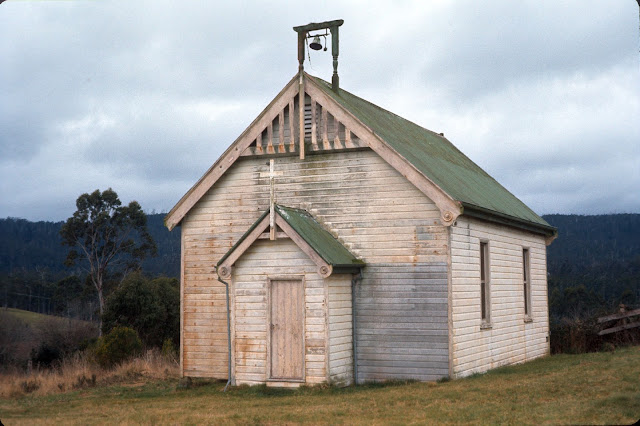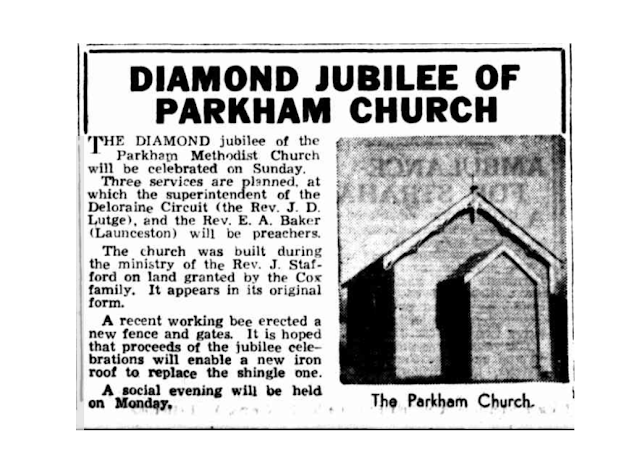No. 432 - Caveside Church of Christ - "The Church in the Paddock"

Caveside is rural community approximately 30 kilometres south west of Deloraine. Until 1897 it was known as Brookside but was renamed Caveside reflecting the abundance of sinks holes and caves in the region. In the 1870s the Church of Christ arrived in Tasmania and first established itself in Launceston and Hobart. Initially the denomination was simply known as the ‘Christians' then from 1885 as 'Disciples of Christ' and finally as 'Churches of Christ'. The Churches of Christ formed numerous congregations across the north of the Tasmania but especially in the north-west. The Church of Christ was established at Caveside when a church or “meeting house” was built near Cubit’s Creek in 1911. The building was completed in 6 days and three opening services were held on Sunday 21 May. The building was a simple split-timber structure but it was sturdy enough to last the community for 40 years. Plans for a new church were submitted to the Deloraine Council in 1950 but six ...










